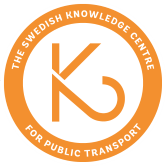Working systematically on gender mainstreaming in transport infrastructure entails implementing a gender perspective in all stages of decision-making, planning and execution. In light of the sustainability goals introduced through the UN’s 2030 Agenda for Sustainable Development, this chapter presents a model of how to address gender mainstreaming in transport planning in a more systematic way. Previous research has addressed the gender-equality goals in Sweden; now, we suggest how to explore the model in an international context. Our research is influenced by the fields of social impact assessment (SIA) and strategic environmental assessment (SEA), which we have combined into a model for integrating gender equality into transport planning. We call it gender impact assessment (GIA). The model has been developed over ten years of research into how gender-equality goals are implemented in transport planning. The model is objectives-led, goal-oriented, and adapted to planning practice.
We argue that an objectives-led approach to GIA could further develop transport planning with regard to gender mainstreaming. First, this approach to GIA could improve the outcomes of transport planning and second, this model of GIA would provide an assessment of whether or not various strategic actions are moving in the desired direction. This means that transport planners would be able to evaluate the fulfilment of the 2030 Agenda goals or national gender-equality goals. Third, GIA would establish assessment criteria to be used for testing the effects on gender equality of strategic actions of transport plans. Fourth and finally, this approach to GIA also highlights potential goal conflicts.
